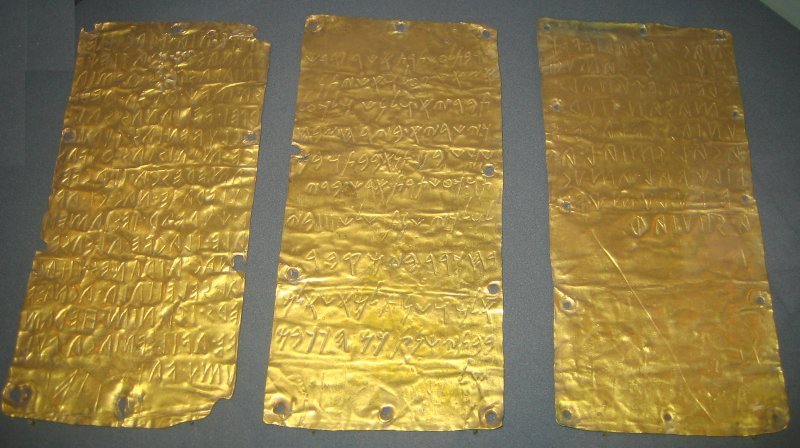Pyrgi Gold Tablets: A Rare Ancient Bilingual Treasure
Ellen Lloyd - AncientPages.com - Dating back to 500 B.C., the Pyrgi gold tablets were discovered in 1964 in an excavation of a sanctuary in ancient Pyrgi, the port of the southern Etruscan town of Caere in Italy.
Pyrgi Gold Tablets. Credit: Public Domain
The three gold plates contain holes around their edges, indicating that they were likely bound together at one point. What makes the tablets so unique is that they are bilingual.
Two tablets are inscribed in the Etruscan language, the third in Phoenician, and are today regarded as the oldest historical source of pre-Roman Italy among the known inscriptions. They contain a dedication by King Thefarie Velianas to the Phoenician goddess Astarte, also known as Ishtar.
The cult of the ancient Mesopotamian goddess associated with love, beauty, sex, desire, fertility, war, justice, and political power spread throughout the region. Ishtar was initially worshipped in Sumer as Inanna. In time, she was also honored by the Akkadians, Babylonians, and Assyrians.
The Pyrgi gold tablets are rare and unusual. They are an ancient treasure both from a linguistic and a historical point of view.
The tablets allow researchers to use the Phoenician version to read and interpret the otherwise undecipherable Etruscan.
Pyrgi Gold Tablets. Credit: Public Domain
According to William J. Hamblin, a professor of history at Brigham Young University, the three Pyrgi gold tablets are a prime example of the spread of the Phoenician practice of writing sacred texts on golden plates from their original center in Phoenicia, via Carthage, to Italy, and is roughly contemporary with the Book of Mormon’s claim that sacred texts were written on metal plates by the Phoenicians’ closer neighbors, the Jews.
There was no need to decipher these fascinating ancient tablets because the Phoenician text was long known to be Semitic. Though the artifacts may not be regarded as an ancient enigma, they are nevertheless of extraordinary historic value and give us a unique insight into how older people communicated their beliefs and showed worship of their beloved goddess Astarte (Ishtar, Inanna).
The Phonecian inscription reads:
To lady Ashtarot,
This is the holy place, which was made, and which was given by Tiberius Velianas who reigns over the Caerites.
During the month of the sacrifice to the Sun, as a gift in the temple, he built an aedicula (an ancient shrine).
For Ashtarot raised him with Her hand to reign for three years from the month of Churvar, from the day of the burial of the divinity [onward].
And the years of the divinity statue in the temple [shall be] as many years as the stars above.
The Pyrgi gold tablets are now kept at the National Etruscan Museum, Villa Giulia, Rome.
Written by Ellen Lloyd – AncientPages.com
Updated on May 28, 2023
Copyright © AncientPages.com & Ellen Lloyd All rights reserved. This material may not be published, broadcast, rewritten or redistributed in whole or part without the express written permission of AncientPages.com and Ellen Lloyd
More From Ancient Pages
-
 Englishmen Jailed For Stealing Rare Viking Hoard Worth Millions
Archaeology | Dec 1, 2019
Englishmen Jailed For Stealing Rare Viking Hoard Worth Millions
Archaeology | Dec 1, 2019 -
 Why Did Vikings Carry Decorative Swords That Were Useless In Combat?
Ancient History Facts | Dec 19, 2017
Why Did Vikings Carry Decorative Swords That Were Useless In Combat?
Ancient History Facts | Dec 19, 2017 -
 New Genes May Explain Why Humans Got Such Big Brains
Archaeology | Jun 2, 2018
New Genes May Explain Why Humans Got Such Big Brains
Archaeology | Jun 2, 2018 -
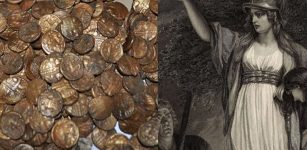 Valuable Ancient Celtic Gold Coins Found By Birdwatcher – A War Chest For Queen Boudicca’s Campaign?
Archaeology | Jan 5, 2021
Valuable Ancient Celtic Gold Coins Found By Birdwatcher – A War Chest For Queen Boudicca’s Campaign?
Archaeology | Jan 5, 2021 -
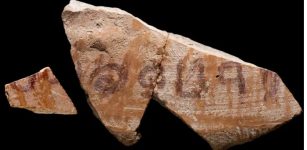 Rare 3,000-Year-Old Jerubbaal Inscription Of Biblical Judge Discovered In Israel
Archaeology | Jul 14, 2021
Rare 3,000-Year-Old Jerubbaal Inscription Of Biblical Judge Discovered In Israel
Archaeology | Jul 14, 2021 -
 Why Did We Abandon Roman Numerals?
Ancient History Facts | Apr 25, 2019
Why Did We Abandon Roman Numerals?
Ancient History Facts | Apr 25, 2019 -
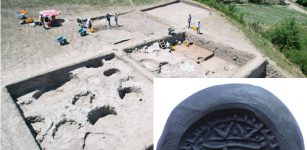 3,300-Year-Old Mycenaean-Like Seal And Dagger Discovered In Turkey
Archaeology | Jul 22, 2022
3,300-Year-Old Mycenaean-Like Seal And Dagger Discovered In Turkey
Archaeology | Jul 22, 2022 -
 Partial Skull Fossils Found In China Could Be A New Species -‘A Kind Of Unknown Or New Archaic Human’, Researcher Says
Archaeology | Mar 6, 2017
Partial Skull Fossils Found In China Could Be A New Species -‘A Kind Of Unknown Or New Archaic Human’, Researcher Says
Archaeology | Mar 6, 2017 -
 In Ancient California Matriarchal Society, Daughters Breastfed Longer And Women Accumulated Greater Wealth
Archaeology | Jul 13, 2023
In Ancient California Matriarchal Society, Daughters Breastfed Longer And Women Accumulated Greater Wealth
Archaeology | Jul 13, 2023 -
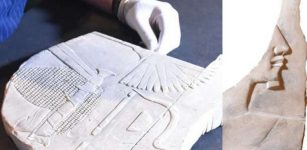 Mysterious Depiction Of Pharaoh Hatshepsut
Archaeology | May 17, 2018
Mysterious Depiction Of Pharaoh Hatshepsut
Archaeology | May 17, 2018 -
 Old Bone Links Lost American Parrot To Ancient Indigenous Bird Trade
Archaeology | Nov 8, 2022
Old Bone Links Lost American Parrot To Ancient Indigenous Bird Trade
Archaeology | Nov 8, 2022 -
 The Knap Of Howar: One Of The Oldest And Well-Preserved Neolithic Complexes Orkney, Scotland
Featured Stories | Mar 2, 2017
The Knap Of Howar: One Of The Oldest And Well-Preserved Neolithic Complexes Orkney, Scotland
Featured Stories | Mar 2, 2017 -
 Major Archaeological Discovery Of A 7,000-Year-Old Settlement In Miami – But Its Future Is In Danger
Archaeology | Feb 10, 2023
Major Archaeological Discovery Of A 7,000-Year-Old Settlement In Miami – But Its Future Is In Danger
Archaeology | Feb 10, 2023 -
 Marriage And Divorce In Ancient Egypt Were Different But Uncomplicated
Ancient History Facts | Dec 12, 2018
Marriage And Divorce In Ancient Egypt Were Different But Uncomplicated
Ancient History Facts | Dec 12, 2018 -
 10,000-Year-Old Adorned Female Infant Burial Discovered In European Cave
Archaeology | Dec 14, 2021
10,000-Year-Old Adorned Female Infant Burial Discovered In European Cave
Archaeology | Dec 14, 2021 -
 On This Day In History: Ueshiba Morihei, The ‘Founder of Aikido’ Was Born – On Dec 14, 1883
News | Dec 14, 2016
On This Day In History: Ueshiba Morihei, The ‘Founder of Aikido’ Was Born – On Dec 14, 1883
News | Dec 14, 2016 -
 Ancient DNA Sheds New Light On The Fall Of Major Civilizations
Archaeology | Aug 9, 2022
Ancient DNA Sheds New Light On The Fall Of Major Civilizations
Archaeology | Aug 9, 2022 -
 Ancient Venetian Merchants Were Always Prepared For The Worst
Featured Stories | Jan 13, 2022
Ancient Venetian Merchants Were Always Prepared For The Worst
Featured Stories | Jan 13, 2022 -
 Stones Of Rajajil – Sophisticated Road Markers Or An Ancient Astronomical Observatory?
Civilizations | May 21, 2017
Stones Of Rajajil – Sophisticated Road Markers Or An Ancient Astronomical Observatory?
Civilizations | May 21, 2017 -
 Enigma Of Étienne Le Ray – Unusual Vagabond Prophet Nicknamed Nostradamus Of Brittany
Featured Stories | Sep 28, 2020
Enigma Of Étienne Le Ray – Unusual Vagabond Prophet Nicknamed Nostradamus Of Brittany
Featured Stories | Sep 28, 2020


